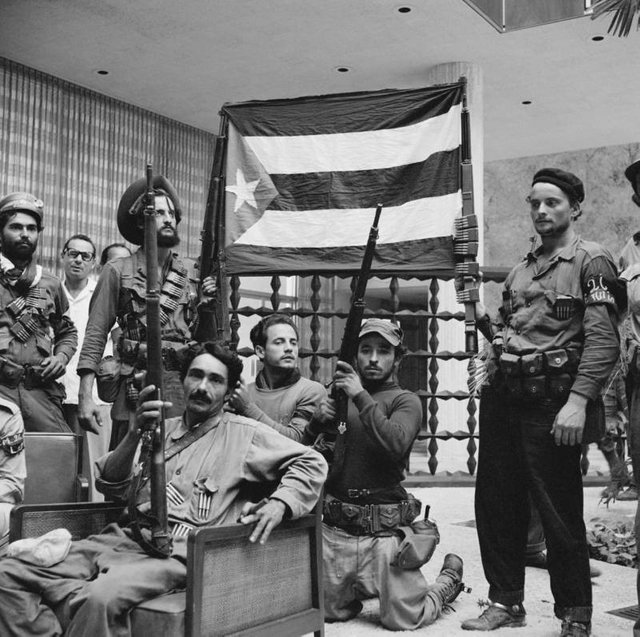1959 - Cuban Revolution
After years of fighting in the mountains, Fidel Castro leads a band of guerrilla campesinos into Havana, overthrowing President Batista's tyrannical government and launching the Cuban socialist experiment.

In March of 1952, about 16 months before the Cuban Revolution began, Fulgencio Batista seized power in a military coup in which all elections were canceled. Batista had been on the ballot for an election in June and he’d been trailing behind the other candidates in the polls. But that didn’t matter anymore. He installed himself as a dictator and likely expected to rule for life. The country spiraled into chaos. Unemployment boomed, the gap between the rich and the poor skyrocketed, and the infrastructure become so neglected that even water was scarce.
One man - Fidel Castro - voiced his frustration with more fury than any other. He’d been a lawyer, an activist, and a candidate for Congress in the election that Batista had canceled. Now, with his chance to enter government democratically ruined, he took to the streets and called on the people to overthrow the tyrant Batista.
On July 26, 1953, the Cuban Revolution began. Fidel Castro and a group of about 150 rebels stormed the Moncada Barracks in Santiago. It was the first battle of a war that would change a country - and it ended in disaster. Castro’s rebels weren’t trained soldiers. Most were farm and factory workers who had banded together in the hope that their revolutionary fervor would make up for what they lacked in training.
This, however, did not happen. The rebels were chased off and nine of their men were left dead and 56 taken as prisoners. Those 56 were tortured and executed en masse on orders that read: "Ten prisoners must be killed for each dead soldier."
Most of those who fled were soon caught as well, including Fidel Castro himself, who was put on trial for instigating the attack.
Castro remained unrepentant. For four hours he ranted to the court about Batista’s crimes of corruption. "I do not fear prison, as I do not fear the fury of the miserable tyrant who took the lives of 70 of my comrades," he told them. "Condemn me. It does not matter. History will absolve me."
He was condemned to 15 years in prison, but his words sparked something in the heart of Cuba. By 1955, he had so much of the public’s support that Batista released most political prisoners. After a brief stint in Mexico where he met fellow revolutionary Che Guevara and prepared his revolution, Castro and his men returned to Cuba on December 2, 1956. By then, the Cuban Revolution was already raging, as rebel militias and student protests rose up against Batista across the country.
Castro's charisma presented a real threat to Batista’s regime. He and the rebels, who now called themselves the 26th of July Movement, moved through the Sierra Maestra Mountains and used guerilla warfare tactics to harass Batista’s army.
At first, their chances seemed bleak. Castro and Guevara arrived with only 80 others and within days Batista’s army managed to slaughter all but 20 of their group.
The tides turned, however, when the United States once again intervened. Two Americans, an ex-military man named William Alexander Morgan and a C.I.A.-linked gun smuggler named Frank Sturgis offered to train and arm Castro’s men. Even with American weapons and tactics on their side, the Cuban revolutionaries rarely numbered more than 200 men, but they still they managed to outmatch Batista’s army of 37,000 in battle after battle.
On March 14, 1958, the United States fully abandoned its support of Batista, as they implemented an arms embargo on Cuba which crippled Batista’s resources. Castro’s final advance began just a few months later on Aug. 21, 1958, when the Cuban Revolution moved down from the mountains and into the cities.
Two columns led by Che Guevara and Camilo Cienfuegos moved into the central provinces where they joined forces with another rebel group called the Revolutionary Directorate Rebels. Together they marched on Batista. On the first day of the new year, the tyrant fled his palace and left Havana behind.
Castro’s revolution was greeted with joy by many Cubans, and the first years of rule were in almost every measurable way an improvement on the days of Batista. Equal rights for women and minorities were ensured, employment skyrocketed, and health and sanitation were reformed.
For more information and images head to History0x